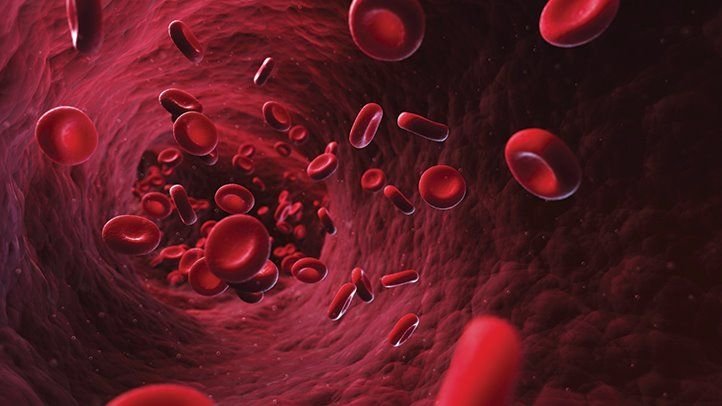Anemia during pregnancy is a global public health challenge
Anemia is one of the most commonly uncounted medical disorders during pregnancy. Most vulnerable groups are adolescent, adult female and pregnancy. Anemia is defined as a decrease in the oxygen carrying capacity of the blood due to decrease in amount of RBCs or hemoglobin or both. Patients with anemia usually have symptoms like weakness, easy fatigability, headache, dizziness and in cases of severe anemia there may be palpitations, breathlessness, generalized swelling. Anemia during pregnancy is especially a concern because it is associated with low birth weight, premature birth, increased maternal morbidity and mortality. Anemia during pregnancy can be a mild condition and easily treated but it can become dangerous and challenging, to both the mother and the baby, if it goes untreated.
It is estimated that globally two billion women suffers from anemia or iron deficiency. In pregnancy most common type of anemia is iron deficiency anemia. According to CDC approximately 56% of all women in India are anemic (i.e. <Hb 11 g/dl). In India anemia is directly or indirectly responsible for 40% of maternal death.
WHO CLASSIFICATION
Anemia in pregnancy is classified as mild, moderate and severe. According to WHO mild anemia 8-11 gm/dL, moderate anemia 5-7 gm/dL and < 5gm/dL as severe anemia.
According to ICMR – Mild anemia – 10-10.9g/dl, moderate Anemia- 7-10g/dl, Severe anemia- Below 7gm/dl and Very Severe – below 4g/dl.
Iron-deficiency anemia
This occurs when the body does not have enough iron to produce adequate amounts of hemoglobin. About 1000 mg of iron is required during pregnancy. Approximately 15% to 25% of all pregnancies experience iron deficiency. Iron is a mineral found in the red blood cells and is used to carry oxygen from the lungs to the rest of the body, as well as helps the muscles store and use oxygen.

Causes-
The cause of anemia truly comes down to how many red blood cells are being produced in the body and how healthy they are. A fall in hemoglobin levels during pregnancy is caused by a greater expansion of plasma volume compared with the increase in red cell volume.
The following are ways red blood cells can be affected and lead to anemia:
• A lack of iron in the diet as a result of not eating enough iron-rich foods or the body’s inability to absorb the iron being consumed.
• Pregnancy itself because the iron being produced is needed for the woman’s body to increase her own blood volume.
Risk Factors for Anemia in Pregnancy-
All pregnant women are at risk for becoming anemic. That’s because they need more iron and folic acid than usual. But the risk is higher if:
• Multiple pregnancies.
• Have had two pregnancies close together
• Teenage pregnancies
• Had anemia before becoming pregnant
Common symptoms of anemia are-
Symptoms of anemia during pregnancy can be mild at first, and often go unnoticed. However, as it progresses, the symptoms may become worse. It is also important to note that some symptoms can be due to a different cause other than anemia.
• Pale skin, lips, and nails
• Feeling tired or weak
• Dizziness
• Shortness of breath
• Palpitations
• Rapid or irregular heartbeat
• Headache
• Cold hands and feet
Risks factors for pregnancy outcome-
Severe or untreated iron-deficiency anemia during pregnancy can increase your risk of having –
A preterm or low-birth-weight baby, IUGR
A blood transfusion (if lose a significant amount of blood during delivery)
Postpartum hemorrhage
Cognitive and affective dysfunction in the infant
Severe anemia may lead cardiac failure.
Management for anemia during pregnancy –
For the diagnosis of anemia invetigations like CBC(HB%), peripheral smear for type of anemia, urine routine and microscopy, stool routine and microscopy and sometimes for specific type of anemia there may be need of USG abdomen, Hb electrophoresis.
1) Diet- iron rich foods like pulses, cereals, jaggery, beetroot, green leafy vegetables, nuts, liver, meat, egg, fish, beans, dry fruits, dates ,figs etc.
2) Iron –oral, parenteral depending on severity, gestational age and compliance.
3) Deworming-as hookworm infestation can lead to anemia.
4) Folic acid/vitamin b12 in case of megaloblastic anemia.
Prevention of anemia during pregnancy –
Awareness and education regarding anemia and its effects on pregnancy .
Improving dietary habits like having iron rich foods, vitamin C helps in better absorption of iron.
Avoiding food which hinder iron absorption like tannins (tea,coffee), phytates etc.
Regular antenatal checkup and taking prophylactic iron /folic acid tablets.
Food fortification.
Lastly, we can say that anemia continues to be a problem with the existing health care resources. Socioeconomic status, literacy of women, and awareness related to health concerns are the major determinants that contribute to the problem of anemia. Therefore, public health education/information on reproductive health, monitoring the compliance of women with antenatal care services are important health care measures to be undertaken at the community level. Also, it is time for the realization that the health system should focus on various factors that contribute to the occurrence of anemia and include them as an important indicator in the national health care policy.
Author’s name: Dr Sandhya
Sr. Resident, Department of Prasuti and Stri Rog, Institute of Medical Sciences,
Banaras Hindu University







